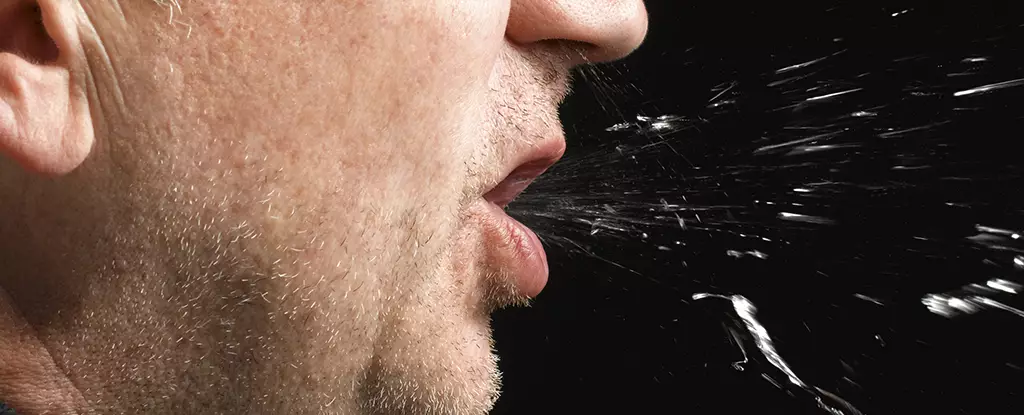In the ongoing battle against infectious diseases, the ability to assess how respiratory droplets spread is crucial for shaping effective public health policies. Recent research from French scientists has brought new insights into this vital area. The team conducted experiments examining how far droplets, emitted during talking, coughing, and even normal breathing, traverse through the air—ultimately enhancing our understanding of disease transmission. The findings of this study not only provide empirical data for use in future research but also provoke a reevaluation of the effectiveness of current health safety measures.
Innovative Methodology: ILIDS in Action
The researchers employed an advanced technique known as Interferometric Laser Imaging for Droplet Sizing (ILIDS), which utilizes high-speed cameras to analyze droplet behavior. This method captures the size and speed of droplets as they interact with laser light, offering unprecedented precision in measurements. According to the study, capturing details about droplet size and emission velocity is essential for modeling their behavior in the atmosphere. This, in turn, has significant implications for developing strategies to limit infection transmission. The research underscores the importance of developing robust methodologies to quantitatively assess droplet dynamics in different contexts.
The Pervasiveness of Volatile Variability
One of the standout revelations from this research is the variability exhibited among different participants. The team invited 23 volunteers into their lab and found significant differences not only in the size of the droplets expelled but also in the velocity at which they were released. In some cases, individuals produced droplets that varied widely, indicating the potential existence of “superspreaders” – individuals who may transmit infections more prolifically than others. Furthermore, even within the same participant, droplet emissions were inconsistent across different tests, hinting at how personal biological factors can influence droplet characteristics, thus complicating public health responses.
Masking Effectiveness: A Shield Against Spread
An encouraging outcome from the study was the effectiveness of masks in reducing droplet dispersal. Researchers found that tissue and surgical masks managed to block 74% to 86% of droplets, regardless of how they were emitted. This data emphasizes the crucial role that masks play in mitigating the spread of respiratory viruses, especially in communal settings. It raises essential questions about the ongoing discourse surrounding mask mandates, particularly as we navigate varying public sentiments and governmental guidelines on health measures.
Call for Broader Research and Diverse Sampling
While this initial study has laid significant groundwork, the researchers call for broader investigations involving more participants to assess variability comprehensively. The nuances surrounding droplet emission, including facial structure differences and the fit of protective equipment, require further examination. Understanding these variables is essential for generating more tailored public health recommendations and guidelines, which can make a decisive difference in curbing transmission rates in various environments.
Implications for Disease Prevention Strategies
The implications of understanding droplet dynamics are far-reaching. As we face threats from both existing and emerging infectious diseases, integrating these findings into public health decision-making can vastly enhance prevention strategies. By improving our understanding of how respiratory droplets behave in real-world settings, health professionals can develop more effective interventions to protect vulnerable populations. Moreover, this information can guide policymakers in crafting evidence-driven regulations aimed at reducing disease spread in both everyday scenarios and during public health emergencies.
In a world grappling with the challenges of infectious disease outbreaks, these findings represent a beacon of hope, equipping us with the knowledge needed to navigate the path forward. Ensuring that scientific inquiry remains robust and expansive is crucial; the fight against infectious diseases is far from over, and the ability to adapt and learn from such studies will be vital in protecting public health.


Leave a Reply